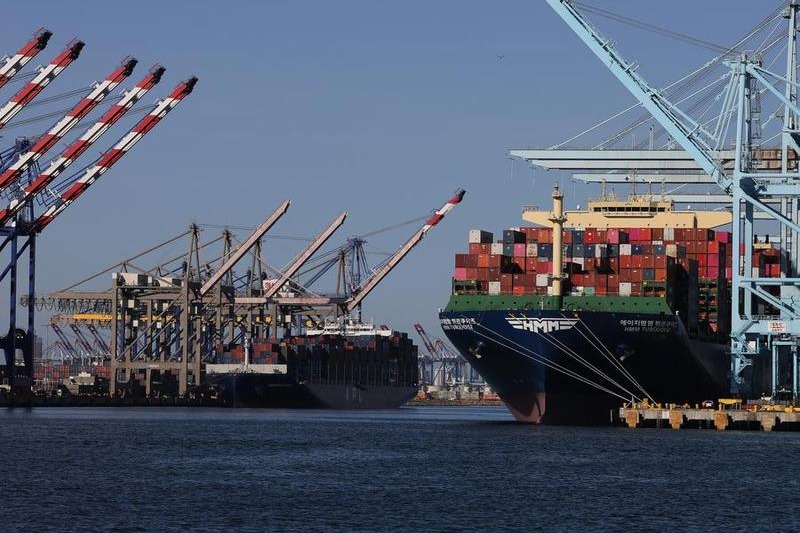Bottleneck breaker
Leveraging the synergy between the BRI and the EU's Global Gateway would ease the development constraints on developing countries


Editor's note: The world has undergone many changes and shocks in recent years. Enhanced dialogue between scholars from China and overseas is needed to build mutual understanding on many problems the world faces. For this purpose, the China Watch Institute of China Daily and the National Institute for Global Strategy, Chinese Academy of Social Sciences, jointly present this special column: The Global Strategic Dialogue, in which experts from China and abroad will offer insightful views, analysis and fresh perspectives on long-term strategic issues of global importance.
China's Belt and Road Initiative and the European Union's Global Gateway strategy represent two of today's most prominent efforts to bridge the widening gaps of global infrastructure connectivity and investment. While differences between the two initiatives exist, they also have many similarities — even complementarity.
If both sides can uphold the spirit of seeking common ground while reserving differences, and strive for coordination and synergy, the longstanding bottleneck of infrastructure development that constrains many countries in the Global South could be significantly alleviated. Ultimately, such cooperation would make a major contribution to the realization of the United Nations'2030 Sustainable Development Goals.
The BRI and the Global Gateway are distinctive in their core objectives. The BRI aims to promote joint economic development among participating countries through cooperation in infrastructure building, unimpeded trade and financial integration. The Global Gateway, on its part, focuses on five key areas — climate and energy, transportation, the digital sector, education and research, and health — with the goal of strengthening connectivity with developing countries while enhancing the EU's position and influence in global governance.
In terms of guiding principles, the BRI emphasizes the principles of extensive consultation, joint contribution and shared benefits. It seeks to align with the development strategies of participating countries and aims for win-win cooperation that leads to common prosperity. The Global Gateway, on the other hand, is guided by EU values and standards. Through infrastructure investment in sectors such as green and digital development, it seeks to expand the EU's global influence and offer an alternative model to that of the BRI. While the two differ in development philosophy, they have the potential to harmonize their approaches and move forward together.
Regarding implementation methods, the BRI upholds openness, inclusiveness and mutual benefit. It attaches no political conditions and respects the sovereignty and development paths of partner countries. In practice, the BRI is driven primarily by enterprises, guided by market mechanisms, and supported by government policies and multilateral cooperation platforms — such as the China-Europe Railway Express and the China-Laos Railway. The initiative places strong emphasis on long-term sustainability. In contrast, the Global Gateway emphasizes the recognition of rules and standards, and leans more on private-sector investment. Its implementation relies on EU budget allocations and financing from institutions such as the European Investment Bank, though actual investment amounts may face limitations.
In terms of scope and sectoral coverage, the BRI spans infrastructure, energy, agriculture, the digital economy and people-to-people exchanges. China has signed BRI cooperation documents with over 150 countries and more than 30 international organizations, with outreach extending across Asia, Africa, Europe and Latin America. The Global Gateway concentrates on the five key sectors mentioned above with the green transition, including hydrogen and renewable energy, at the core. Geographically, it focuses on regions such as Africa, Southeast Asia, Central Asia and Latin America, overlapping considerably with the BRI.
As the Chinese saying goes: "Though the paths differ, the wind that carries us is the same." While the BRI and the Global Gateway differ in their goals, principles and implementation styles, mutual respect and openness to collaboration can enable both sides to complement each other and achieve mutual benefit. Notably, the many similarities between them create ample space for synergy and coordination.
First and foremost, they share similar overarching goals that make it possible to have positive competition and mutually beneficial coordination. The Global Gateway aims to drive economic development in developing and emerging countries through high-quality infrastructure investment, strengthen global connectivity, and boost the EU's economic presence worldwide. The BRI similarly focuses on enhancing economic cooperation and development in participating countries, promoting shared growth through infrastructure development and trade. This suggests that, at least at certain stages, the two initiatives are aligned in their strategic aims.
The overlap is evident in their focus on improving connectivity through infrastructure development. The Global Gateway seeks to enhance global connectivity through cooperation in infrastructure construction while prioritizing green, clean and safety standards. The BRI likewise places strong emphasis on connectivity-related infrastructure, including roads, railways, shipping, aviation, pipelines and integrated space-based information networks. It aims to build a comprehensive and multi-tiered network of connectivity to promote the flow of people, goods, capital and information across regions. China's rich experience and technical expertise in infrastructure construction could offer valuable support to the implementation of Global Gateway projects. At the same time, China can also draw experience from the Global Gateway's emphasis on green, high-standard infrastructure to further enhance the quality and sustainability of its own projects.
In the realm of green development, there is a considerable degree of consensus between the BRI and Global Gateway. The Global Gateway places green transition at its core, adhering to principles of environmental protection and sustainable development across all sectors. It prioritizes sustainable transportation projects and renewable energy initiatives, aiming to contribute to a global shift toward a green economy. The BRI, too, gives high priority to green development, incorporating renewable energy and eco-friendly technologies into infrastructure projects, such as solar power plants and wind farms, to provide strong momentum for connectivity efforts.
The potential for mutual learning in cooperation models will also help both initiatives reach new levels. The Global Gateway emphasizes multilateral cooperation with countries and international organizations, using partnership-building and the signing of agreements to advance project development. The BRI, while incorporating multilateral efforts, also places strong emphasis on bilateral cooperation, signing country-to-country agreements and developing joint projects to deepen economic ties. In terms of implementation, the Global Gateway stresses a blend of government and market participation, using public funds to mobilize private capital and allowing the market to play a decisive role in the allocation of resources. The BRI similarly values market mechanisms, encouraging enterprises to take the lead in project development and investment while leveraging the government's role in policy guidance, planning and risk management. Sharing and summarizing these similarities and differences and understanding their impact on performance will yield valuable insights into global infrastructure development trends.
Today, with the rapid rise of artificial intelligence, mounting downward pressure on the global economy, and growing turbulence in geopolitics and global order incurred by the unpredictable sway of US foreign policies, the world is facing growing "development deficit" and sharpening global challenges. Against this backdrop, cooperation between China and the EU is entering a new window of opportunity. If the BRI and the Global Gateway can serve as models of collaboration amid healthy competition, as joint engines bridging the global investment gap in connectivity, and as key drivers for achieving the UN SDGs, they will not only realize a shared vision, but also fulfill a responsibility — and answer the call to action.


The author is an academic member at the Chinese Academy of Social Sciences and dean of the School of International Politics and Economics at the University of Chinese Academy of Social Sciences. The author contributed this article to China Watch, a think tank powered by China Daily.
Contact the editor at editor@chinawatch.cn.


































